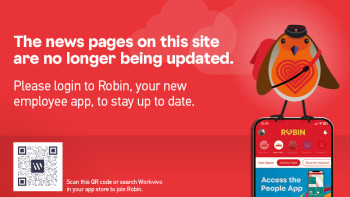Brave new world

When fashion mag Marie Claire switched to online-only last month, many heard the death-knell of print journalism. Those cries are premature say Stephen Agar, managing director of letters, and Tim Cable, wholesale product director.
‘Tragedy’, ‘very sad’, and ‘a huge loss’ were some of the newspaper headlines greeting the news that the fashion and lifestyle magazine Marie Claire would cease print production in November after 31 years.
Marie Claire was undoubtedly ground-breaking in its time. Launched in 1988, it was one of the first self-styled ‘thinking woman’s magazines’ with a focus on hard-hitting topics like reproduction rights and climate change alongside fashion and beauty tips. But recently it had found it increasingly hard to progress against the headwinds of declining print advertising revenues and the internet-led flood of free online media. Its circulation fell steeply from 150,000 in 2017 to 120,000 in 2019. The announcement in September was hardly a surprise.
‘Online is a very different marketplace,’ said Stephen. ‘You can make savings because you’re not having to pay for retail space, but the issue is: will people see your content, and will they pay for it?’
Traditionally, there have been two models of magazine circulation: retail and subscription. In retail, publishers pay for often pricey space in newsagent stands and supermarkets to flog their wares; in subscription, by contrast, publishers sell their magazines direct to customers, allowing more niche content – Stamp Collector, anyone? – to thrive.
Publishers who can’t make either model work are left with one choice: online-only. But that has several disadvantages, explains Stephen.
‘Firstly, there’s something about the power of real. It’s nice to have a pile of mags in your sitting room. Secondly, you can’t tell who’s reading your stuff as easily – with subscription, you have all your customer’s relevant details.’
The shift towards online-only, though, even at major publishers like TI Media – who publish Marie Claire alongside 50 other titles in the UK – is not ‘seismic’, believes Tim.
Instead, Tim expects more publishers to switch to a subscription-based model while maintaining an online presence. But, he warns, this means that publishers must publish something customers are willing to pay for: ‘Magazines will have to focus more on the quality of their content – there’s so much available for free now online,’ he said. ‘They’ll also have to look at diversification, and we’re looking at how we can help them.’
Stephen points out that other companies are seizing the opportunity of the subscription-based model, with everything from razors to veg boxes being delivered regularly to customers through their postboxes. Subscription also has the advantage of locking customers in and ensuring a steadier revenue flow for businesses.
Here at Royal Mail, we’re poised to capitalise on this booming market with three new parcels hubs and a network of later van deliveries to handle larger, next-day parcels. In fact, both Stephen and Tim are optimistic about the direction of change – for publishers and our business. ‘The overall economic proposition for the company is a good one,’ Stephen asserts.
Marie Claire’s shift to online-only might be a sign, then, of the brave new world of magazine publishing – but fortunately it’s a world in which Royal Mail is poised to thrive.



